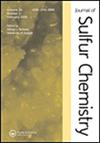高性能锂硫电池用氢键有机骨架硫复合材料
IF 1.6
3区 化学
Q3 CHEMISTRY, MULTIDISCIPLINARY
引用次数: 0
摘要
随着储能设备的快速发展,锂硫电池因其高能量密度(2600 Wh Kg−1)和低硫成本而被认为是有前途的候选者之一。尽管有这些优点,但锂硫电池的应用受到许多问题的限制,例如多硫化物的穿梭效应和缓慢的氧化还原反应。本文首次选择了氢键有机框架材料,利用其独特的性能来提高硫阴极的性能。由于hof材料中丰富的氢键可以与聚硫锂相互作用,这种S-HOF复合材料可以抑制聚硫锂的穿梭,增强聚硫锂的转化。结果表明,HOF-S复合材料在0.1℃时具有1100 mAh g−1的高初始容量,在1℃时具有530 mAh g−1的高初始容量。本文首次选用氢键有机框架(hof)材料来提高硫阴极的性能。在S-HOF中,丰富的氢键位点可以与聚硫锂相互作用,抑制聚硫锂的穿梭,加速聚硫锂的氧化还原转化。因此,S-HOF复合材料具有更高的容量和循环稳定性。S-HOF复合材料在0.1℃时的初始容量为1100 mAh g-1,在1℃时的初始容量为530 mAh g-1。本文章由计算机程序翻译,如有差异,请以英文原文为准。
Hydrogen-bonded organic framework-sulfur composite for high performance lithium–sulfur batteries
With the rapid development of energy storage devices, lithium–sulfur batteries are considered as one of the promising candidates due to their high energy density (2600 Wh Kg−1) and low cost of sulfur. Despite these advantages, the application of lithium–sulfur batteries is limited by many issues, such as the shuttle effect of polysulfide and slow redox reactions. In this paper, hydrogen-bonded organic frameworks (HOFs) materials are chosen for the first time to improve the performance of sulfur cathodes by exploiting their unique properties. Thanks to the abundant hydrogen bond of HOFs materials, which can interact with lithium polysulfide, this S-HOF composite can inhibit the shuttle of polysulfide and enhance the transformation of polysulfide. As a result, the HOF-S composite has a high initial capacity of 1100 mAh g−1 at 0.1 C and 530 mAh g−1 at 1 C.
In this paper, hydrogen-bonded organic frameworks (HOFs) materials are chosen for the first time to improve the performance of sulfur cathodes. In the S-HOF, abundant hydrogen bond sites can interact with lithium polysulfide to inhibit the shuttle of polysulfide and accelerate the redox conversion of polysulfide. Therefore, the S-HOF composite has higher capacity and cycle stability. The initial capacity of the S-HOF composite is 1100 mAh g–1 at 0.1 C and 530 mAh g–1 at 1 C.
求助全文
通过发布文献求助,成功后即可免费获取论文全文。
去求助
来源期刊

Journal of Sulfur Chemistry
CHEMISTRY, MULTIDISCIPLINARY-
CiteScore
4.10
自引率
9.10%
发文量
38
审稿时长
6-12 weeks
期刊介绍:
The Journal of Sulfur Chemistry is an international journal for the dissemination of scientific results in the rapidly expanding realm of sulfur chemistry. The journal publishes high quality reviews, full papers and communications in the following areas: organic and inorganic chemistry, industrial chemistry, materials and polymer chemistry, biological chemistry and interdisciplinary studies directly related to sulfur science.
Papers outlining theoretical, physical, mechanistic or synthetic studies pertaining to sulfur chemistry are welcome. Hence the target audience is made up of academic and industrial chemists with peripheral or focused interests in sulfur chemistry. Manuscripts that truly define the aims of the journal include, but are not limited to, those that offer: a) innovative use of sulfur reagents; b) new synthetic approaches to sulfur-containing biomolecules, materials or organic and organometallic compounds; c) theoretical and physical studies that facilitate the understanding of sulfur structure, bonding or reactivity; d) catalytic, selective, synthetically useful or noteworthy transformations of sulfur containing molecules; e) industrial applications of sulfur chemistry; f) unique sulfur atom or molecule involvement in interfacial phenomena; g) descriptions of solid phase or combinatorial methods involving sulfur containing substrates. Submissions pertaining to related atoms such as selenium and tellurium are also welcome. Articles offering routine heterocycle formation through established reactions of sulfur containing substrates are outside the scope of the journal.
 求助内容:
求助内容: 应助结果提醒方式:
应助结果提醒方式:


